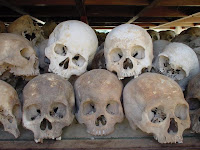During the April 16 debate between Hillary Clinton and Barack Obama, moderator George Stephanopoulos brought up “a gentleman named William Ayers,” who “was part of the Weather Underground in the 1970s. They bombed the Pentagon, the Capitol, and other buildings. He’s never apologized for that.” Stephanopoulos then asked Obama to explain his relationship with Ayers. Obama’s answer: “The notion that somehow as a consequence of me knowing somebody who engaged in detestable acts 40 years ago, when I was eight years old, somehow reflects on me and my values, doesn’t make much sense, George.” Obama was indeed only eight in early 1970. I was only nine then, the year Ayers’s Weathermen tried to murder me.
In February 1970, my father, a New York State Supreme Court justice, was presiding over the trial of the so-called “Panther 21,” members of the Black Panther Party indicted in a plot to bomb New York landmarks and department stores. Early on the morning of February 21, as my family slept, three gasoline-filled firebombs exploded at our home on the northern tip of Manhattan, two at the front door and the third tucked neatly under the gas tank of the family car. (Today, of course, we’d call that a car bomb.) A neighbor heard the first two blasts and, with the remains of a snowman I had built a few days earlier, managed to douse the flames beneath the car. That was an act whose courage I fully appreciated only as an adult, an act that doubtless saved multiple lives that night.
I still recall, as though it were a dream, thinking that someone was lifting and dropping my bed as the explosions jolted me awake, and I remember my mother’s pulling me from the tangle of sheets and running to the kitchen where my father stood. Through the large windows overlooking the yard, all we could see was the bright glow of flames below. We didn’t leave our burning house for fear of who might be waiting outside. The same night, bombs were thrown at a police car in Manhattan and two military recruiting stations in Brooklyn. Sunlight, the next morning, revealed three sentences of blood-red graffiti on our sidewalk:
FREE THE PANTHER 21; THE VIET CONG HAVE WON; KILL THE PIGS.
For the next 18 months, I went to school in an unmarked police car. My mother, a schoolteacher, had plainclothes detectives waiting in the faculty lounge all day. My brother saved a few bucks because he didn’t have to rent a limo for the senior prom: the NYPD did the driving. We all made the best of the odd new life that had been thrust upon us, but for years, the sound of a fire truck’s siren made my stomach knot and my heart race. In many ways, the enormity of the attempt to kill my entire family didn’t fully hit me until years later, when, a father myself, I was tucking my own nine-year-old John Murtagh into bed.
Though no one was ever caught or tried for the attempt on my family’s life, there was never any doubt who was behind it. Only a few weeks after the attack, the New York contingent of the Weathermen blew themselves up making more bombs in a Greenwich Village townhouse. The same cell had bombed my house, writes Ron Jacobs in The Way the Wind Blew: A History of the Weather Underground. And in late November that year, a letter to the Associated Press signed by Bernardine Dohrn, Ayers’s wife, promised more bombings.


